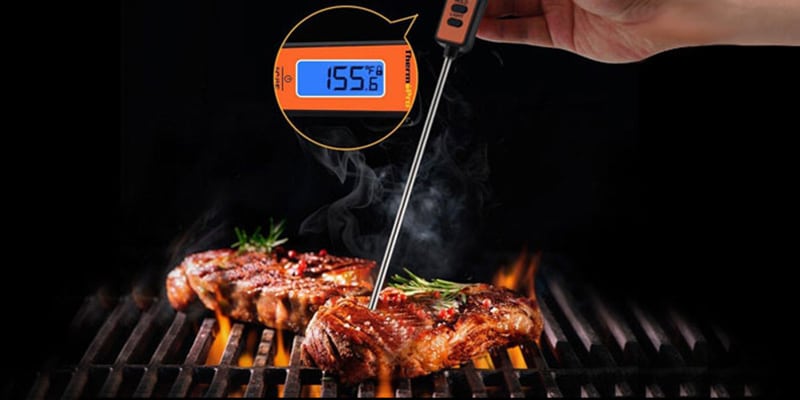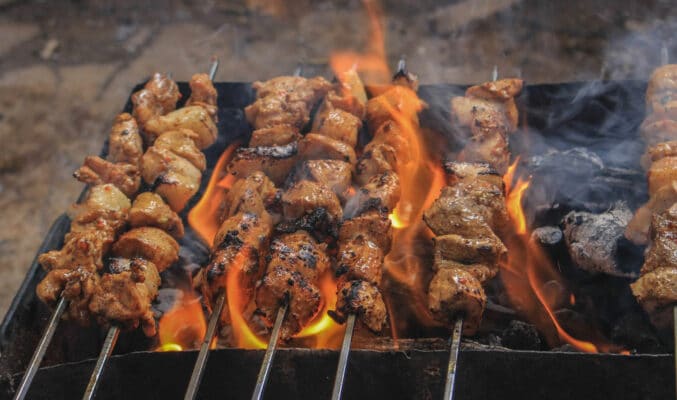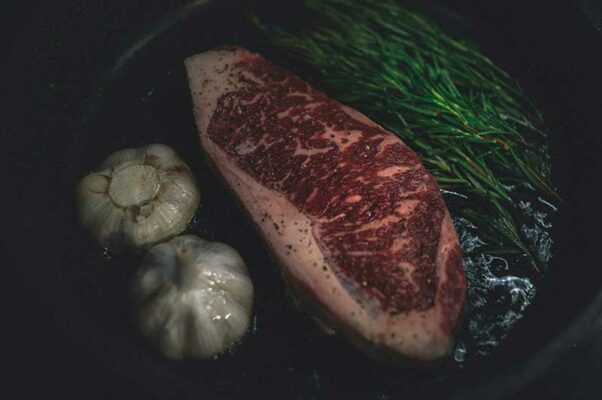The customer service team is always listening, taking notes, and quantifying complaints to ensure our products are continually improved. Due to selling directly to you, the customer, via Amazon, we can use product reviews to help us improve our existing products or help further development of new products.
How to Grill Steak Like a Pro - Temp Steak Accurately
Table of Contents
Properly grilling a steak is an art form that every meat-eating cook should aspire to learn. I remember my first attempts were largely unsuccessful. Missing several vital pieces of information, I didn’t know how to regulate steak temperature or even that there was an ideal steak cooking temperature. I didn’t even know what a properly cooked steak looked like, much less how to measure steak temperature while grilling. After serving a round of steaks to my wife’s friends that were charred on the outside but raw in the middle, I vowed to learn the science behind grilling a perfect steak. This is what I have learned.
Why Should We Temp A Steak?
Temping a steak is important for several reasons. It’s important to remember that we don’t always have control over the conditions that we’re cooking in, especially if we’re cooking outdoors. There are many environmental factors which can have an effect on our cooking process. Temping a steak is the best way to get consistent cooking results from inconsistent cooking conditions.
Secondly, and more importantly, you want to make sure that you bring the center of your fillet up to the proper temperature, in order to protect yourself and the people you’re feeding from foodborne illnesses. The last thing you want to do is get a friend or family member sick from eating an improperly cooked piece of meat. Salmonella poisoning isn’t fun, and you don’t want to be responsible for causing it.
Finally, temping a steak will help you refine your cooking technique so that you can get predictable results each time you cook. It’s pretty cool to know what is going on inside the meat while you are watching it cook from the outside. Understanding the internal processes is the key to getting the perfect steak that you’ll be proud to serve.
And here is a step by step YouTube video to show you how to temp steak accurately:
How is the Ideal Steak Cooking Temperature Determined?
Firstly, it’s important to note that when we are talking about cooking steak at the proper temperature, we are talking about the internal temperature of the thickest part of the meat, not the temperature of the environment the steak is cooking in.
There are two main factors to consider when you’re determining the ideal steak temperature to cook at. The first is food safety, and the second is how well do you want to cook your steak. The USDA recommends bringing beef steak up to at least 145 degrees and letting it rest for at least three minutes. Unfortunately, that would bring the steak up to medium.
For most steak lovers, that is just too much. Thankfully it is possible to cook steak at lower temperatures for longer and still get the same bacteria-killing effect. This explains the popularity of cooking steak sous vide because you can bring the steak up to the correct temperature without the fear of overcooking it.
This technique also typically results in a more evenly cooked product that will also retain more moisture. For curious cooks, this technique is highly recommended.
For grilling steak, you want to bring the steak up to about 125 degrees for a rare steak, 130 degrees for medium rare steak, 140 degrees for medium steak, 150 degrees for medium done steak and 160 degrees for well done steak (also known as ruined.)
Because cooking temperatures for rare and medium rare steaks fall below the 145-degree heat recommended by the USDA to prevent foodborne illnesses, selecting the highest quality of meat and handling it with the utmost care is essential for your health and the health of anyone you are cooking for.
How do You Temp A Steak?
The best way to temp a steak is with a meat thermometer. Even if you are cooking your steak sous vide, it is essential to be sure about the internal cooking temperatures. I use a ThermoPro food thermometer because they are affordable and reliable.

First, start by grabbing your tongs and picking up the steak. Many people temp their steaks by sticking the thermometer into the face of the meat on one side. I recommend against this for two reasons. The first is that it gives you a less accurate temperature reading because it only tests a small part of the steak.
The second is that if you then flip the steak, gravity will cause the juices of the steak to drip out which can cause your grill to flare up making it more difficult to control the cooking process. Instead, stick your thermometer into the side edge of the steak, and puncture the meat slightly past where you think the center of the cut is. This will give you a more accurate reading.
What is the Ideal Resting Temperature of a Steak?
The ideal resting temperature for your steak will, of course, depend on how much you like it cooked. However, it is important to remember that the internal temperature will continue to rise for a few degrees after you remove the steak from the heat. Since there is only a small window between a medium rare and a medium steak, for example, it’s essential to pull the steak before it reaches the desired temperature in anticipation of this rise in temperature.
Pulling the steak two-to-four degrees before it reaches its final cooking temperature is a good rule of thumb. This means pulling your steak at about 123 degrees for a rare steak, 128 degrees for medium rare, 138 degrees for medium, 148 degrees for medium well and 158 degrees for a well-done steak.
Keep in mind that the longer you cook your steak, the longer it will continue to cook when you pull it. You may wish to pull your steak a few degrees earlier if you’re cooking it to medium or more. Some cooks recommend pulling the steak up to 10 degrees before it reaches your desired cooking temperature.
In my experience, this is a little excessive, but it will all depend on how hot your cooking environment is and how quickly the meat got up to resting temperature. You may need to experiment and adjust your technique to meet the needs of your cooking environment and tastes.

Letting the steak rest is important to give it time to finish cooking internally, and to finish the process of killing harmful bacteria. Not only is it safer to let the steak rest after cooking it, but it will produce more consistent results and leave you with a perfectly cooked cut of steak every time. Not only will resting give your steak the chance to finish cooking without overcooking it, but it will also provide the juices time to redistribute inside the steak which will result in a more uniformly juicy product.
What Type of Meat Thermometer is the Best for Cooking Steak?
By far, my favorite thermometer to use is any wireless meat thermometer that has an instantaneous digital readout. To get the perfect steak cooked exactly the way you like, it’s essential to get your information in real time. You want to know what is happening in the steak as it is happening, without any delay.
Traditional thermometers have a delay and are difficult to read at best. While they are certainly better than nothing, they won’t get you same consistent results that an instant-read, digital thermometer will. You can spend a nice chunk of change for a thermometer if you are looking for something that will last for years and that will give you exact results.

Personally, I find that a thermometer in the 12-20 dollar range suits my needs perfectly without breaking the bank. ThermoPro has an excellent range of digital thermometers that can suit any budget, are easy to use and withhold the abuse that I give to all of my tools. Whatever brand you choose, a good thermometer can make the difference in a perfectly cooked steak and is an essential tool for every kitchen which you can use for many other dishes.
Learning by Doing
The most important thing to remember about learning to cook a steak properly is that nothing compares to time spent on the grill or time spent perfecting whatever your ideal cooking method might be. There are many ways to arrive at perfectly cooked steak, but all of them take the experience to master. Don’t be discouraged if it takes you a few times to sort it out.
Don’t make the same mistake that I did by thinking you can swing for the fences your first time at bat. Avoid the shame and embarrassment that comes along with serving a piece of raw meat and give a new process a few test runs before you serve it up to your wife’s hungry friends. Learning that you haven’t quite got the hang of it when you’re grilling for yourself on a lazy weekend afternoon is a lot more palatable than eating crow in a room full of strangers!











